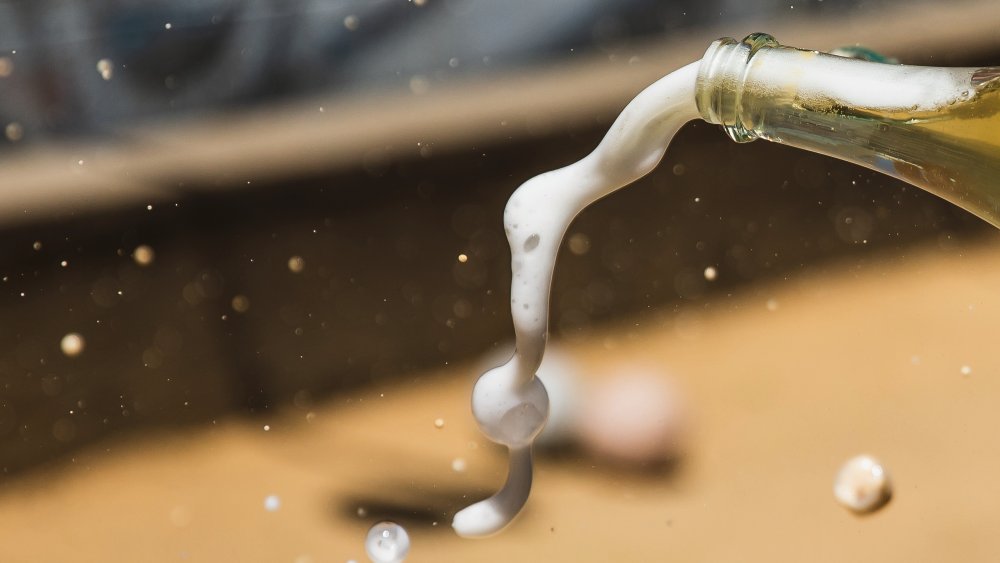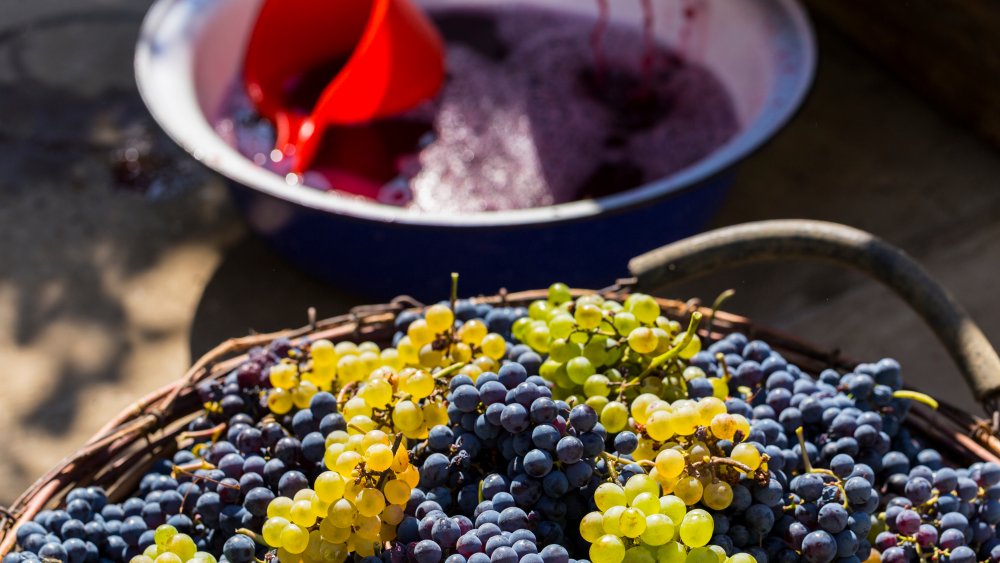Here's What You Need To Know About Pet-Nat Wines
Pet-nat wines certainly have a catchy name, and they're being seen in restaurants and wine stores all over the country, but what exactly are they? Pet-nat stands for "petillant naturel," which in French means "naturally sparkling" (via Food & Wine). This type of wine-making actually pre-dates champagne, and the process involves bottling the wine before it has finished its first fermentation (via Vinepair). This allows for it to produce bubbles inside the bottle, as opposed to in vats like how prosecco is made.
It's such an easy method that it sometimes happens with wines that aren't even intended to become sparkling, which causes them to go bad. The naturally-occurring residual sugar from the grapes can referment in the bottle, which produces a fizziness (via Wine Mag).
Because of the uncontrolled fermentation process, the wines can sometimes pick up "bad bacteria" which will result in a bottle that tastes a bit off. By the same token, because the process is so natural, even bottles in the same batch can taste different, which is part of what keeps pet-nat wines interesting.
The characteristics of pet-nat wines
Pet-nat wines tend to be on the sweeter side and are often cloudy as filtering them, as is done with champagne for example, is optional. They come in red, white, and rose varieties and are produced all over France and Italy, and are picking up steam with winemakers in the United States.
Rose and white are the most popular varieties, as a sparkling red wine takes some getting used to. They originate in the south of France where they were made dating back to the beginning of the 1500s by winemaking monks. These pet-nat wines tend to result in a lower alcohol content compared to other wines (typically between 10 to 12 percent), and don't have added preservatives or sugars like prosecco often does (via Pull the Cork).
One easy way to spot pet-nat wines on the shelf at first glance is by glancing at the top of the bottle — many pet-nat wines are bottled with a beer-style cap rather than a cork.

